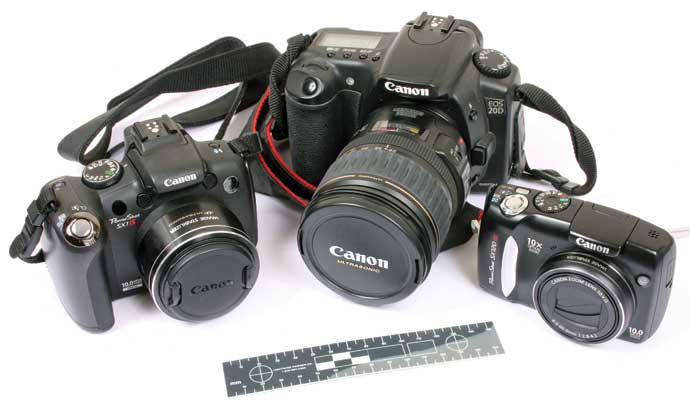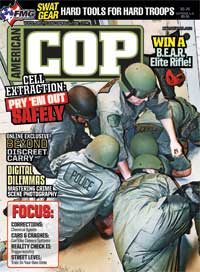
camerasbig
Mastering Crime Scene Photos.
Back in the “dark ages,” law enforcement photography meant understanding what an F-stop was, how shutter speeds work, accurate focusing and choosing an appropriate film ASA. Not so today. With technology, photography has seemingly become simple and free — seemingly being the key word. While a modern camera may take a “perfect” snapshot, the picture may fall far short of a truly evidential quality image without proper thought and technique.
Any camera may be used to record a scene; however, the simpler the camera (think cell phone camera) the more difficult the chore. Nonetheless, most point-and-shoot digital cameras have most of the features to capture images for evidential use.
Before proceeding though, consult your agency’s policies regarding photography. Agency dictum may determine in what format photos are taken (.JPEG, TIFF, etc.) and how they’re stored (burn to disc, download to the agency hard drive, etc.). Protocols aren’t just to meet the likes of a departmental geek; they’re established in conjunction with the local prosecutor and often judges, to ensure the images may be introduced into evidence in court.
General Settings
Look at the format settings for your camera. If your agency doesn’t specify a file format, you want the camera to save images with minimal or no compression. Compression refers to the computer taking the image data and squeezing it to take up less storage space on the media card (Compact Flash, XD, SD, etc.). Compressing the data reduces the overall quality of the image, which in our field is bad; we want detail.
High-end cameras have a RAW format, proprietary to the specific manufacturer, which stores the data without any loss of detail. The problem with RAW is to view images using common photo software; they must be converted to a more common format.
The next best format is TIFF, which doesn’t compress the image. If your camera has a 10 MB sensor, then each photo will be about 10 MB.
Some cameras use only .JPEG format. If you’re faced with this, you need to choose the highest quality setting — fine, high quality, or a similar term. This will introduce minimal compression, and the stored image will contain the maximum amount of electronic data possible.
Once known as ASA, and now as ISO, this number refers to the light-gathering capability of media. Generally, the lower the available light, the larger the individual “targets” that make up the image. Surveillance photos, taken under minimal light, require high ISO ratings (e.g. 3200) and result in very grainy images. Since most evidential photography can be augmented with flash, much lower ISOs (and less grain) can be used. An ISO of 100, 200 or 400 is suitable for most documentation, with ISO 200 being a good compromise setting.
If your camera settings permit you to set a type of focus, choose center spot. In evidential work, this will be the subject of interest, so ensure your camera focuses on it.
>> Click Here << To Read More About Digital Dilemmas
View The American COP March/April 2012 American COP Issue Now!















